THE LONG SLOW DEATH OF REID SQUARE (1870)
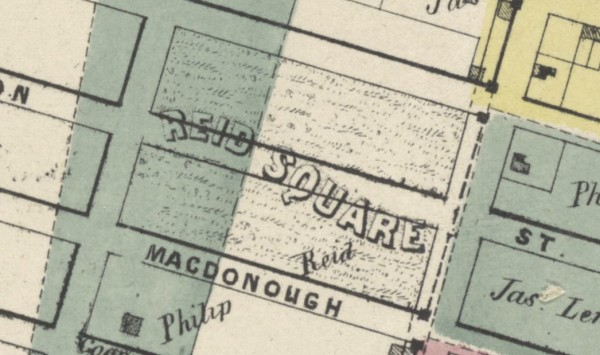
******************************************************************************************************************************** Brownstone Detectives investigates the history of our clients’ homes. The story you are about to read was composed from research conducted in the course of one of those investigations. Do you know the history of YOUR house? ******************************************************************************************************************************** Laid down by the Brooklyn street grid commissioners in the 1830s, Reid Square was a planned park that was to be comprised of two of Brooklyn’s city blocks in the Town of Bedford. Named after the owner of the farmland that the once-future park was to grace, Philip Reid, Reid Square never ended up being developed. The Square was to be bounded by Reid and Stuyvesant Avenues and Halsey and MacDonough Streets. Macon Street, which, for all intents and purposes, would have passed directly through the square at its center, was to be closed at that point. In 1869, however, as the park had been laid out but not improved, the Committee on Opening Streets of the Brooklyn City Common Council met and proposed a resolution to “draft an act to the Legislature to close Reid Square and lay down Macon Street from Stuyvesant to Reid aves.” This proposal was adopted and later in April of 1869, the Legislature passed the act, dooming Reid Square to an historical footnote. It is quite probable that powerful real estate speculators at the time forced the planned public square into its stillborn state, allowing the properties on these streets to be broken up into lots and then sold at auction for development purposes. Follow @BrownstoneDetec […]
THE “GREAT UMPIRE” FANS WEE WILLIE (1922)
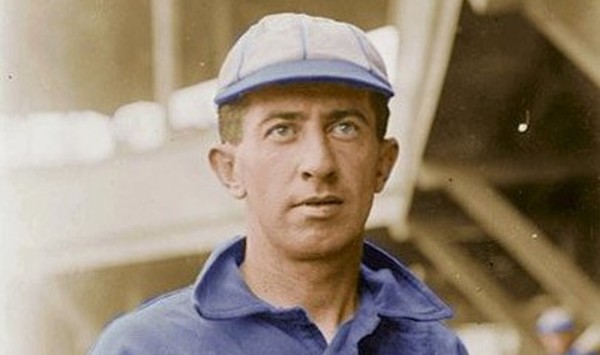
******************************************************************************************************************************** Brownstone Detectives investigates the history of our clients’ homes. The story you are about to read was composed from research conducted in the course of one of those investigations. Do you know the history of YOUR house? ******************************************************************************************************************************** When we research the histories of our clients’ homes, we inevitably uncover stories that tell part of the narrative of our neighborhoods. Today, we present a short piece on a ballplayer who was once so famous – and such a great player – that he was nicknamed “the Brooklyn Astor” for what he was paid to played for a Brooklyn ball club. This was Wee Willie “Hit ’em, where they ain’t” Keeler who predicted his death at moments after the strike of midnight on New Years Eve. ************************************************************************************************ Hall of Famer Wee Willie Keeler, known for his “hit ‘em where they ain’t” strategy, was “born and bred” in the “Eastern District” of Brooklyn. As a matter of fact, he lived at two particular addresses – and went to school and played ball at another two – all within today’s Bedford-Stuyvesant. Keller, who played primarily for the Brooklyn Superbas and the Baltimore Orioles from 1892-1910, was referred to as the Brooklyn Millionaire when he retired. Keeler had been the first ballplayer to be paid $10,000 a year. He died, though, a pauper, living in a dim second floor apartment at 1010 Gates Avenue and having never married or sired a child. In ill health toward the end of his life, he grew […]
FOOLING THE UNDERTAKER, PT. II (1900)
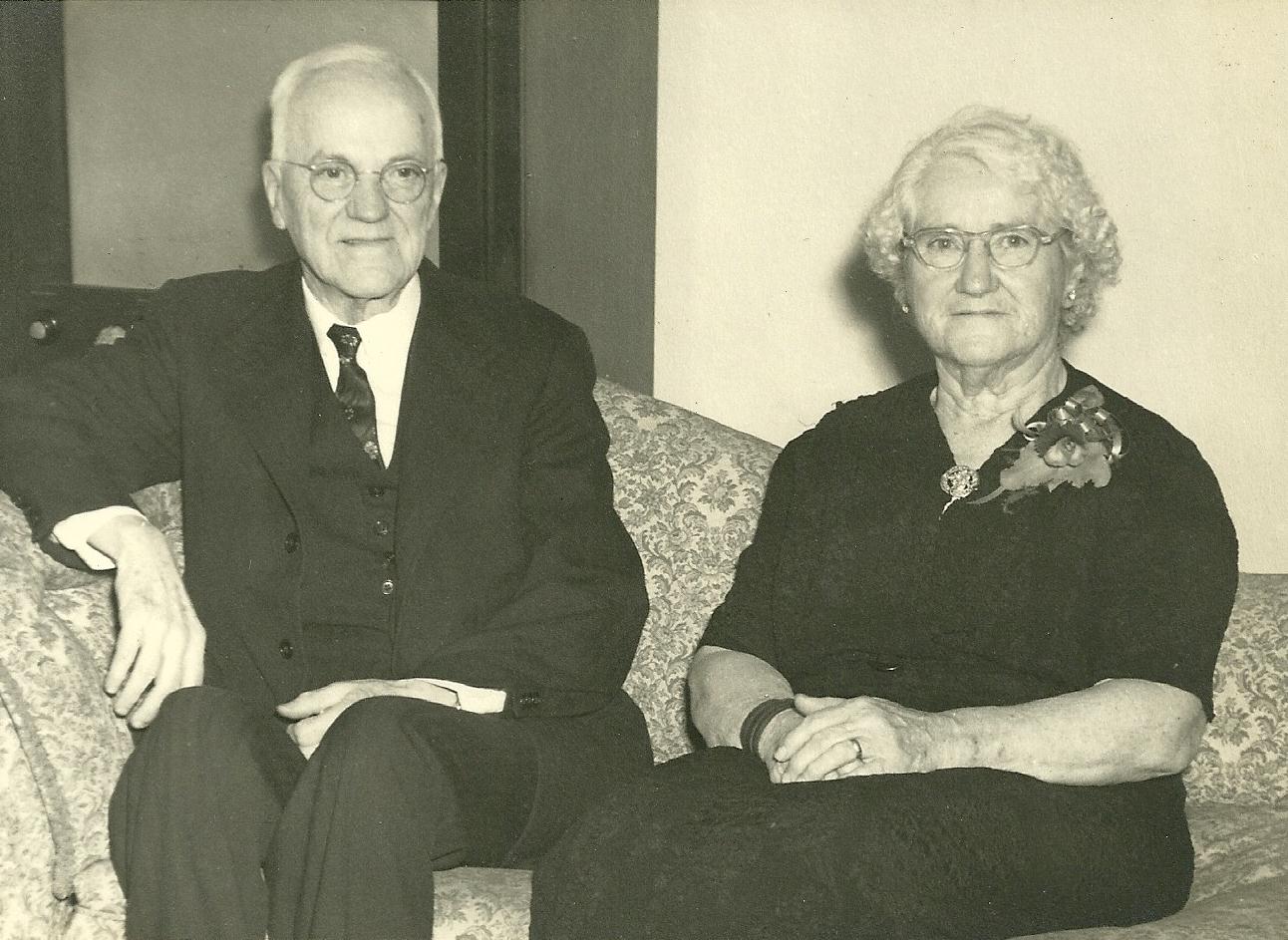
(Continued from Part I of Fooling The Undertaker) The first time that Park returned to Ralph Avenue for his Miss Twaddle, the watchful Twaddle boys were there to meet him. They refused to allow Miss Twaddle to see Park, and so he returned home both frustrated and empty-handed. Park knew he would have to find a way to outsmart the Twaddle boys. None of them was married, and so it was clear to him that they didn’t understand true love. Hardcastle, the undertaker (and Park’s former boss), was another obstacle to overcome – he, too, had never married. And while Park was sure of Hardcastle’s eagle’s eye, he was just as certain that Hardcastle’s hearing had not been cured a few years ago by Dr. Copeland’s quack patent medicine. So, when Park returned the second time in late May of 1900, he had already planned their escape, guiding Miss Twaddle’s actions and informing her where to meet him. Miss Twaddle would tiptoe down the stairwell, being exceedingly quiet. When she reached the door, she would walk in the opposite direction of Hardcastle’s parlor and down Macon Street toward Saratoga Square. On this second visit, Park was successful. Meeting up with Miss Twaddle, he spirited her away with him – and away from her life on Ralph Avenue. The two had “eloped” in grand fashion, making their way to a church far enough away from Ralph Avenue that they could marry without interference – which they did – that day. Afterwards, […]
FOOLING THE UNDERTAKER (1900)
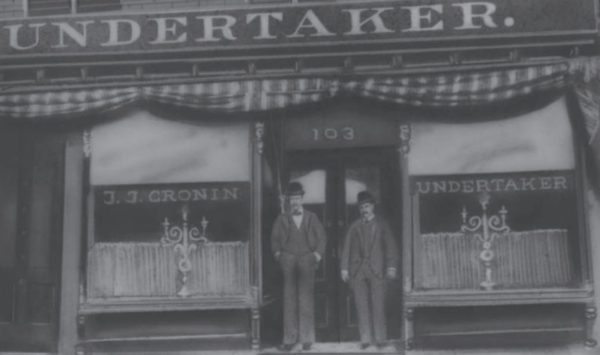
******************************************************************************************************************************** Brownstone Detectives investigates the history of our clients’ homes. The story you are about to read was composed from research conducted in the course of one of those investigations. Do you know the history of YOUR house? ******************************************************************************************************************************** Among the many thriving shops that lined busy Ralph Avenue at the turn of the century was a single story storefront at 159 Ralph Avenue. Just up from Macon Street, it stood amongst the avenue’s tailors, bakers, butchers, paper-hangers, plumbers, and pharmacies, dealing in bereavement and mourning. Hardcastle Brothers Undertakers had been in the neighborhood for almost as long as there had been a neighborhood. When a local resident died, it was usually Robert K. Hardcastle’s business to have them removed to his undertaking salon where he would prepare them for their wake and subsequent burial. Hardcastle was of Scotch-Irish descent – a bit bull-headed, very stubborn, and quite recently deaf. But he was a respected member of the community for the role he played in it, and the work he did for the families here. Hardcastle prepared and buried a good number of the people who died on Macon Street and the surrounding streets at the time. His business was steady, as people were constantly dying, so, other than a bit of advertising he did a few years ago for Dr. Copeland’s patented Hearing Treatment – he had little need to advertise his own undertaking services. It was all word-of-mouth. In 1900, though, a small piece of newspaper fluff about an employee […]
EXHUMING THE GARDENER OF BED-STUY (1914)
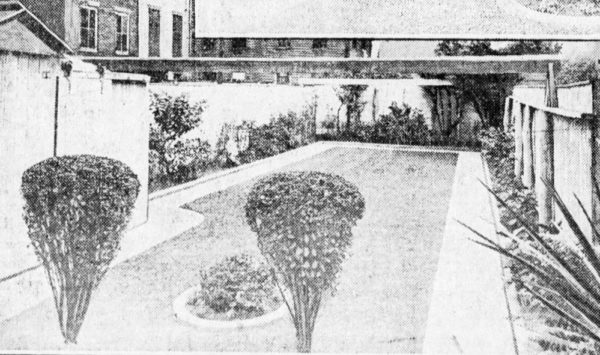
******************************************************************************************************************************** Brownstone Detectives investigates the history of our clients’ homes. The story you are about to read was composed from research conducted in the course of one of those investigations. Do you know the history of YOUR house? ******************************************************************************************************************************** “All stories, if continued far enough, end in death, and he is no true-story teller who would keep that from you.” — ERNEST HEMINGWAY, Death in the Afternoon The dead are everywhere amongst us. When we think of the past, we ponder the lives of those poor souls who once lived, breathed air, told tales, worked, and dreamed dreams. They can no longer tell tales, as the saying goes, but those resourceful ones amongst us can often piece together their forgotten stories and, with them, weave the colorful and ornate narratives of their lives. When we start researching a house and its former occupants, we never know what we’re going to find. Sometimes we unearth a truly bountiful draw – pictures of owners, documentation on the building, and the stories about what had happened at that house – they seem to start popping up all over the place. With other houses, though, it can seem as if the place had never been occupied. But we always find something. No matter how small. And these are the clues that become our figurative footprints. We’re detectives, you know. 😉 THE GARDENER OF 1155 BEDFORD AVENUE When we began snooping around 1155 Bedford Avenue, on the trail of a particular Charles Morse, we found […]
PVT. BUDD SOMERS (A BEDSTUY HERO) (1918)
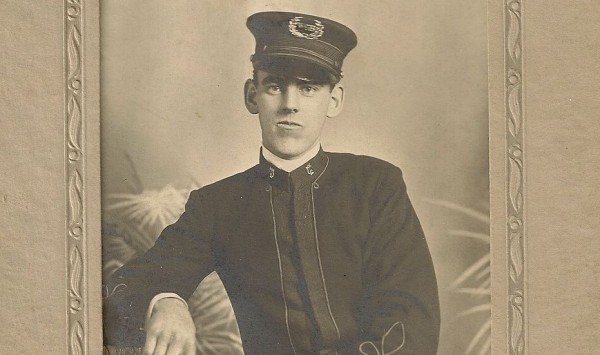
******************************************************************************************************************************** Brownstone Detectives investigates the history of our clients’ homes. The story you are about to read was composed from research conducted in the course of one of those investigations. Do you know the history of YOUR house? ******************************************************************************************************************************** In 2014, The Brownstone Detectives partnered with the New York City Parks Department to help celebrate the lives of the servicemembers of Bedford-Stuyvesant Heights who made the ultimate sacrifice during the Great War. We researched these heroes to locate pictures, stories, and their descendants to be brought together for a ceremony that dedicated a new “Victory and Peace” war memorial at Saratoga Park. This biography tells the story of one of those servicemembers. PVT. BUDD RUSSELL SOMERS “Budd” Russell Somers was born in Owego, New York, near Binghamton, on 3 March 1891. His family moved to Pennsylvania at some point before the century was out. But, Somers would find himself back in Brooklyn sometime after 1910. A “tool maker” at the John Johnson & Company – at 37th Street and 3rd Avenue – Somers was a tall and slender man with grey eyes and chestnut hair. He had been courting Daisy Elizabeth Saxby when American involvement in the Great War became a reality, and so he did what many other young single men going off to war did – he married her. His marriage was the classic pre-war wedding, taking place less than five months before being “called up” in the draft. When that event occurred, on 10 October, Somers boarded […]
PVT. ARTHUR HOLDSWORTH (A BEDSTUY HERO)
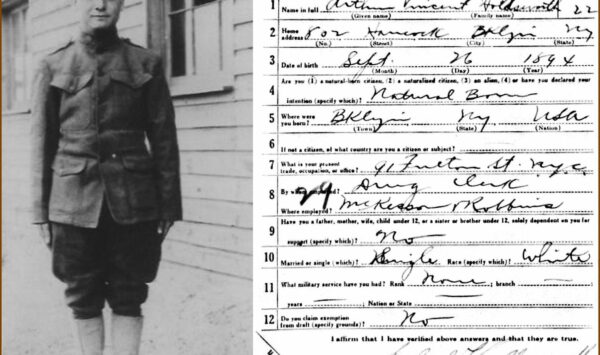
******************************************************************************************************************************** Brownstone Detectives investigates the history of our clients’ homes. The story you are about to read was composed from research conducted in the course of one of those investigations. Do you know the history of YOUR house? ******************************************************************************************************************************** In 2014, The Brownstone Detectives partnered with the New York City Parks Department to help celebrate the lives of the servicemembers of Bedford-Stuyvesant Heights who made the ultimate sacrifice during the Great War. We researched these heroes to locate pictures, stories, and their descendants to be brought together for a ceremony that dedicated a new “Victory and Peace” war memorial at Saratoga Park. This biography tells the story of one of those servicemembers. PVT. ARTHUR VINCENT HOLDSWORTH Arthur Vincent Holdsworth looked for all the world like a little boy. Even after he had joined the Army and went to training at Camp Upton on Long Island, he could not escape the blush of youth. In the picture (right), Pvt. Holdsworth displays that youth, all too surely, along with his inexperience, and maybe just a bit of his great uncertainty for the future. He stands awkwardly erect outside of a barracks, proud in his new uniform, but looking like a schoolboy in his first set of Sunday clothes. Truth be told, he was still a boy yet – still an innocent. But he would mature quickly and, in a war that defined his age, die just as quickly. THE WAR In the grand scheme of things, Pvt. Arthur V. Holdsworth drew the […]
THE TRAIN THAT RAN ABOVE LEXINGTON (1947)
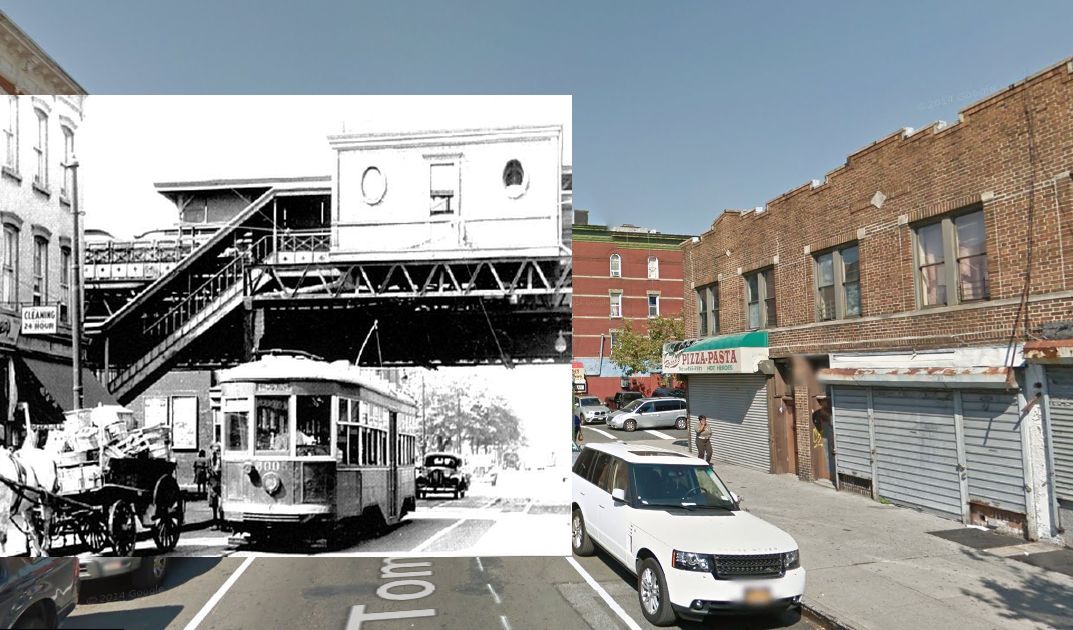
******************************************************************************************************************************** Brownstone Detectives investigates the history of our clients’ homes. The story you are about to read was composed from research conducted in the course of one of those investigations. Do you know the history of YOUR house? ******************************************************************************************************************************** Yes, there not only used to be a streetcar running down Tompkins Avenue in Bedford-Stuyvesant, but Lexington also at one time had sported its very own elevated subway train. Opening in 1885, the Lexington elevated train was in the vanguard of bringing owners and potential homebuyers to the Bedford and Stuyvesant Heights areas. The Lexington Avenue “el,” as it was called, split from the Myrtle Avenue elevated (yes, there was one up there, too) at Grand Avenue, where it headed down to Lexington then turned east and headed in the direction of Broadway. Taken in 1947, this picture shows the confluence of these two avenues and forms of transportation. You can also see automobiles of the period and an anachronism – even for the times – a horse with its cart parked along Tompkins. A few years after this picture was taken, demolition began on the elevated line. Read more about this line (and how long traces of it existed even after it had been demolished) on Forgotten New York. Follow @BrownstoneDetec Share ———————————————————————————————————————– The Brownstone Detectives Brownstone Detectives is an historic property research agency. Our mission is to document and save the histories of our clients’ homes. From our research, we produce our celebrated House History Books and House History […]
THE “SCREAM” OF MACON STREET (1907)
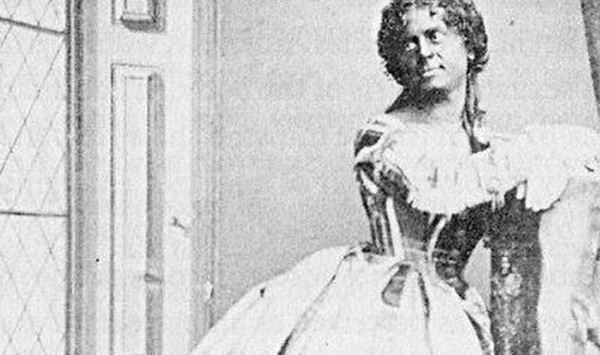
******************************************************************************************************************************** Brownstone Detectives investigates the history of our clients’ homes. The story you are about to read was composed from research conducted in the course of one of those investigations. Do you know the history of YOUR house? ******************************************************************************************************************************** Female “personators” seemed to bring out the passion in folks back in the day. Maybe there was less sexuality involved in the whole dressing-as-a-woman thing. Or maybe it was simply a matter of sexuality not mattering at all. Or, as some say, it was everything. But when “The Great Eugene” took the stage – and he took the stage always as a woman – men, in particular, seemed to find themselves singularly rapt in attention and admiration at the spell that the talented female personator was casting over them. BUILDING THE PERFECT IMPERSONATOR The Great Eugene, otherwise known simply as Eugene, was named Eugene D’ameli as a child. He was born on Manhattan in 1836, and, according to The New York Dramatic Mirror (the Broadway rag of the time), he made his first debut at the tender age of 17, playing what he would end up playing the rest of his career – a “prima donna” – a persona which “he improved and perfected until it was considered the best of its class.” His partner, “Johnny” Unsworth, of 700 Macon Street, recalled Eugene’s beginnings in the minstrel theatre. “Because he was so small and slight and built somewhat like a woman Gene started female impersonations, always in black face, as a […]
TINTYPE, OWNER, 738 MACON ST. (1892)
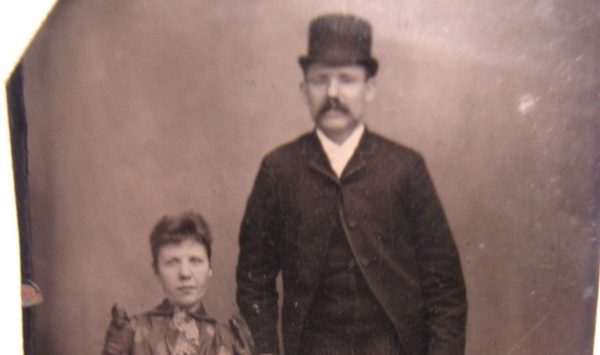
This is the oldest picture we tracked down of a former owner of 738 Macon Street, a house which was the subject of our first House History Book, “No. 738 Macon Street: The Story of a House.” A tintype, it was taken around 1892 at Macy’s in Manhattan, a standard location where people went to have such parlor photographs made. The subjects of the tintype are Martin Loftus and his wife, Rose. (These are the grandparents of the celebrated Aunt Patsy, who we tracked down during the writing of the book. Click the link to enjoy a short interview with her about her time in the 1940s on Macon Street in Bed-Stuy.) Then recently married, Martin and Rose were living at No. 32 Greenwich Avenue in Manhattan where Martin was working as an engineer. Around the turn of the century they would move with three kids (and one on the way) to a wood frame house at 293 Bainbridge Street in the Stuyvesant Heights section of Brooklyn. The house no longer exists, but neither does the wood mill that sat next door to it. Another 20 years later, in 1919, and their 3-generational family of nine would move into 738 Macon Street – where members of the Loftus family would live for 32 years. Follow @BrownstoneDetec ———————————————————————————————————————– The Brownstone Detectives The story you have just read was composed from extensive historical research conducted by The Brownstone Detectives. We perform in-depth investigations on the historic homes of our clients, and produce […]